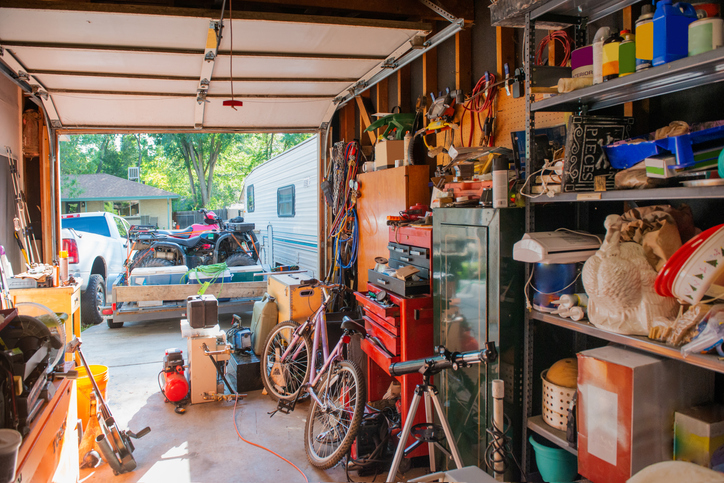What is a packrat?
A packrat is someone who collects, what others would consider, unnecessary items. They will have a lot of clutter but will have a reason or purpose for all of it.
In contrast, hoarders seldom want to have their possessions on display, and they are usually kept in disarray. People who collect things, regardless of the size of their collection, typically display their collections and keep them well organized.
What is a hoarder?
Hoarding Disorder is a subtype of obsessive-compulsive disorder (OCD), and while people with OCD can have hoarding tendencies, most people with Hoarding Disorder do not tend to have OCD.
If you are unsure if your loved one is struggling with Hoarding Disorder, be on the lookout for these key indicators: continual and significant difficulty in letting go of possessions that are broken or non-essential items while also engaged in the excessive acquisition of new things; a living space that is occupied by mostly clutter; impaired physical and mental health, social isolation and housing instability, such as the threat of eviction.
If you have a loved one who is a hoarder, find help at Anxiety Canada
If you live with a packrat or are trying to help a packrat move, here are some recommendations to help them through the process of letting go, while maintaining a healthy (and happy) relationship:
1.Be gentle on yourself and your partner. Collecting items through the years does not happen overnight. It takes the idea that one thing is practical, useful and needed, one item after another. Somewhere along the way, the idea of letting go became harder, and items continued to collect. Therefore, be gentle on yourself and your partner by using understanding, compassion, kindness and empathy.
2.Let go of judgement. Your partner may not realize how much of a problem their stuff is causing, or they may not be able to face it – yet. Refrain from saying:
“You’re a slob.”
“You’re such a mess.”
“Don’t you know how this makes me feel?”
This attacks their character and who they are. Instead, use words that are encouraging and supportive.
“We’re in this together.”
“You do not have to do it alone.”
“One step at a time.”
3. Recognize that your partner has fears about letting go.
Fear of needing it in the future.
Fear of not having enough.
Fear of wasting.
These fears can be crippling and overwhelming. To help your partner, encourage him or her to keep only a small percentage of their items, keeping only what they use and love. Let them know that there is enough, and by letting go, they are not wasting. They are opening your lives up to so much more – space, energy, time, money and love.
4.Lead by example. Get clear on the vision you have for your home and talk about it. Share photographs about what you would like your home to look and feel like. And then, take your advice and begin letting go of the extra stuff that belongs to you. Reduce your closet to what you love and wear. Let go of extra books, magazines and other items that you no longer use. Model what you’d like your partner to do and share the experience openly with him or her. Celebrate letting go for more of what you want your home to look and feel like.
5.Do not get rid of anything that they feel is important or special without their consent. This is important! You may be tempted to secretly start taking their stuff and donating it or throwing it out. But if you do, you can cause a lot of pain, sadness and mistrust. Instead, let them make their own decisions by empowering them to go through the process of letting go.
Admittedly, this is not an easy task to do as a spouse or partner. There is a lot of history and the story behind the items in question, which are part of their story and yours. Take this one step at a time and don’t rush the process. And if you are unable to make any progress on your own, do reach out! Sometimes having an unbiased third party, who knows how to help someone let go, could be your saving grace. We are here to help.

